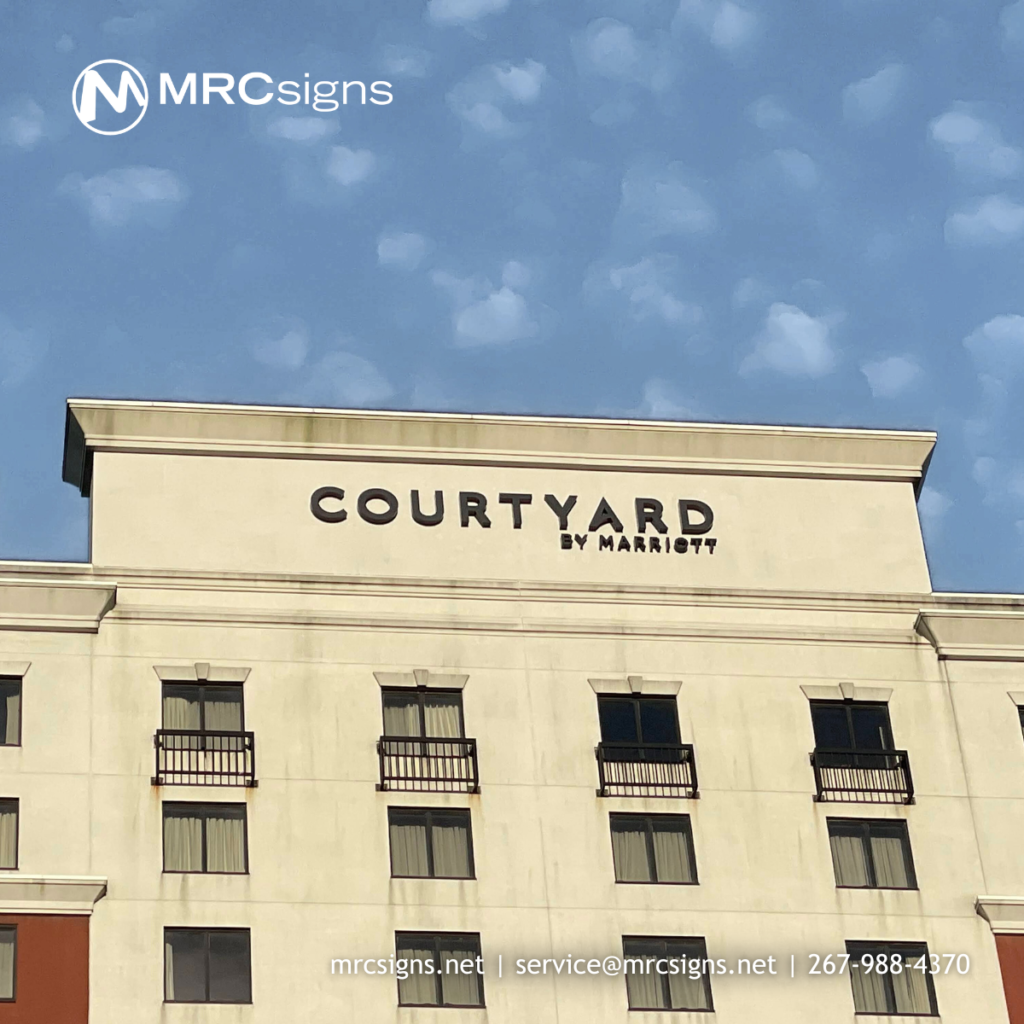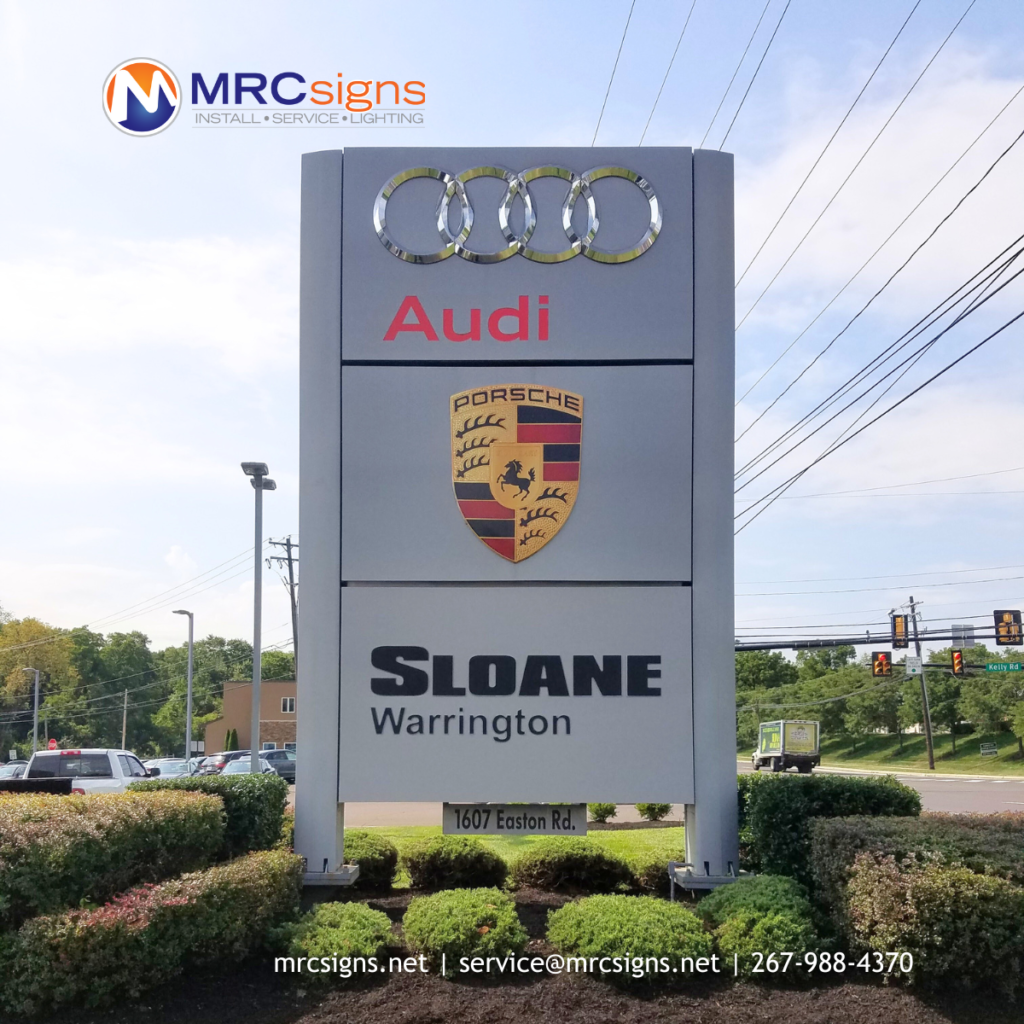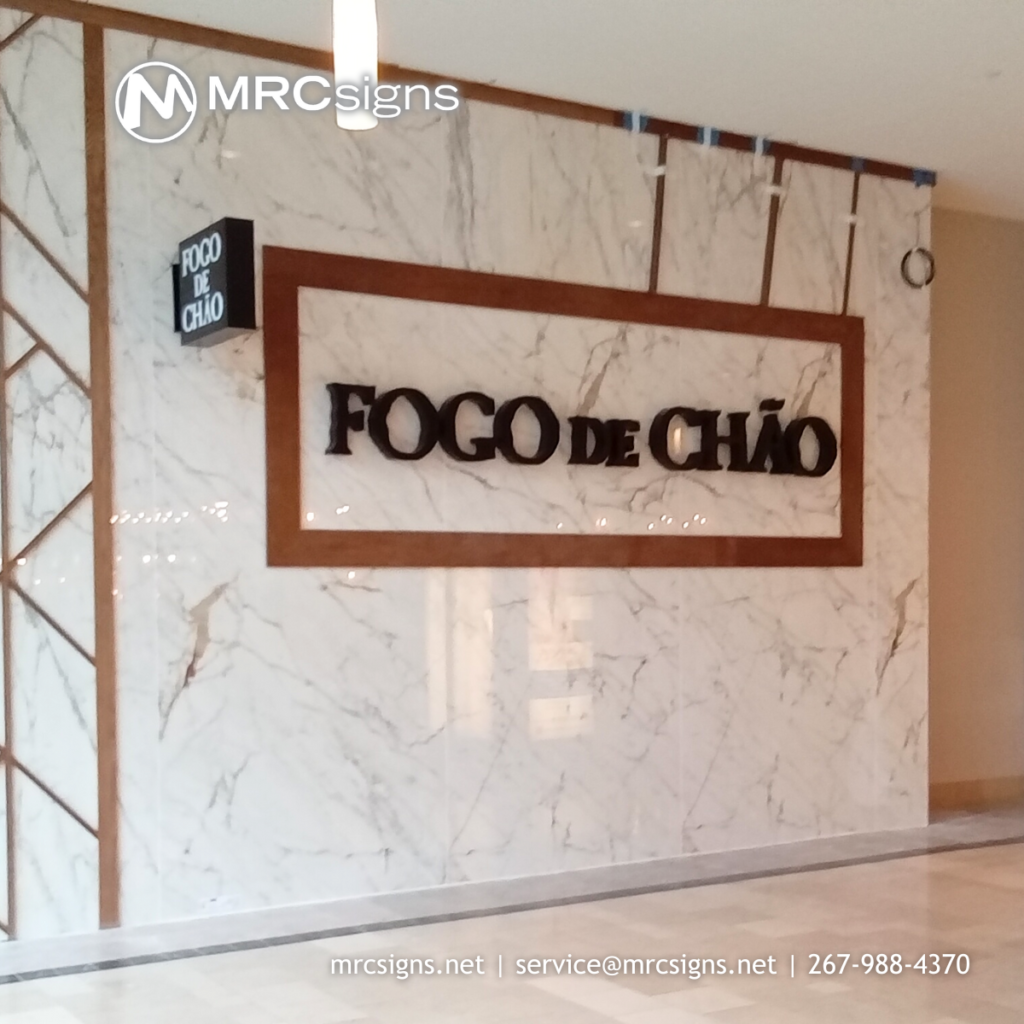Signs 101: Your Signage Field Guide
Last week, you learned about how you can improve your business with signage and the steps involved in making your sign. If you missed us last week or need a refresher, click here to see Signs 101: The “Why” and “How” of Signs. Then sign up for our newsletter so you don’t miss the next installment!
This week, you’re ready to take the next step towards improving your business. You know that signage can improve your business’s brand recognition, increase foot traffic, ensure would-be customers don’t get lost, and even promote deals and sales. You also know that creating your signage can be a complex process, but that we here at MRC Signs are prepared to help you every step of the way. In fact, we’re here now to guide you through your next step: deciding exactly what type of sign you need.
Signs can be as diverse and creative as you and your business are, and they come in many shapes and sizes. We’ve broken them down into three main categories: building-mounted, freestanding, and interior. We’ve also provided a brief description of each. Feel free to skip around!

Building-Mounted Signs
Building-mounted signs are signs that are attached to your building in some way. These signs are key to brand and locational awareness. They can be especially useful when square footage is limited or when multiple businesses are under one roof. To customers, building-mounted signs are most useful on buildings which are visible from the road or when used in combination with other signs that point the way.
- Awnings: Awnings extend out from the building, usually over a door. This type of signage has multiple uses. In addition to advertising your brand and maximizing curb appeal, it can also provide potential customers with shelter from the sun and the rain.
- Window Signs: Window signs are signs which are attached to, applied on, or hang behind a window. These are usually supposed to be viewed from the outside of the building.
- Sign Bands: For buildings with multiple tenants, sign bands run above multiple entrances and display the branding and signage for each business.
- Wall Signs: Wall signs are signs which attach to the exterior of a building, usually just below the roof. These signs are also sometimes called fascia signs due to the name of the trim they connect to.
- Projecting Signs: Projecting signs are signs which are mounted on the wall of the building and project out, away from the building.
- Roof Signs: Roof signs are signs that are mounted on the roof of a business but do not extend above the roof line or change the outline of the building.
- Parapet Signs: Parapet signs are mounted on the parapet, a railing or wall along the edge of a roof. They extend upwards past the roof line, changing the building’s outline.

Freestanding Signs
Freestanding signs are signs which are not attached to a building. They are useful for catching the attention of drivers, especially when the entrance of your business is not immediately visible from the street. These signs can be some of the flashiest and most eye-catching, perfect for unique designs and head-turning appeal.
- Pylon Signs: Pylon signs are tall signs with visible support structures or poles. Sometimes, however, the poles are covered and incorporated into the design. Pylon signs can also be called “pole signs.” Particularly tall pylon signs are sometimes referred to as “high rise.”
- Multi-Tenant Signs: Much like sign bands, multi-tenant signs accommodate buildings with multiple tenants within. Unlike sign bands, these signs are not mounted to the building. These are often found at the entrances to plazas or strip malls and advertise what stores customers can find inside.
- Monument Signs: Monument signs are one of the most common types of sign. Monument signs are lower to the ground and have a solid base instead of a pole or other support structure. Often, these types of signs are required by landlords or local ordinances.
- Directional Signs: Directional signs point the way to drivers and pedestrians, especially towards hidden entrances. These are often paired with an additional sign or signs which advertise the name and logo of the associated business.
- Electronic Message Centers (EMCs): EMCs are signs with digital displays, making it possible for your business to display changing messages, ads, or information. These signs should not be overlooked. Though EMCs can be a large initial investment, they will change with your business and communicate vital info to your customers. Whether you’re rebranding, having a blowout sale, or hosting a huge event, EMCs can keep up.
- Vehicle Wraps: Vehicles wrapped with your branding are moving signs for your business. Wrapping your company vehicles expands the reach of your brand far beyond what a typical sign would provide.

Interior Signs
Don’t let interior signage be an afterthought for your business. Interior signs are crucial for navigation and can influence the buying decisions of your customers. In some cases, they are even mandatory. However, they can also add flair and bring your branding into your interior. The sky’s the limit.
- Regulatory: Regulatory signs are mandatory signs enforced by local ordinances or laws such as the Americans with Disabilities Act or fire codes. These often denote structures such as elevators, bathrooms, or stairways.
- Directory Signs: Like multi-tenant signs, directory signs display information about the businesses present in a building. Often, these also display maps or other locational information. You may have seen these signs in a mall letting you know “you are here.”
- Directional Signs: Also known as wayfinding signs, directional signs move your customers through your building and ensure no one gets lost.
- Point-of-Purchase Signs: Point-of-purchase signs are signs located within your business. They may advertise sales, deals, or products, and are effective at influencing buyer decisions and increasing sales.
Each type of sign has its own strengths. It can be a real challenge to decide what type will suit your business best. Keep this guide handy on your sign journey, and join us next week to discuss the lighting of your signage and how this important factor can make your business shine.
Still have questions? No worries, we’ve got you. Get our next installment directly in your inbox by signing up for our newsletter. Or, if you’re ready for the next step, reach out to our team to get a quote.
Tags: sign. signage, Signs 101
